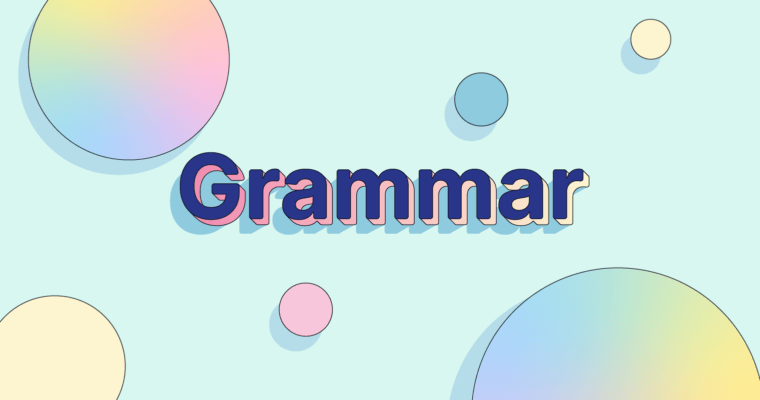
Does your vocabulary need a boost? After losing a game or two of Scrabble, you may find yourself wishing your linguistic library had more flavor.
Fortunately, it’s pretty simple to expand your vocabulary by focusing on words you already know and learning their opposites! Opposite words, or antonyms, are complementary threads that add depth, contrast, and nuance to our words and ideas. From simple dichotomies like light and dark to the more complex interplay of freedom and constraint, antonyms are essential building blocks that shape our competence in communicating.
In a world where yes and no collide, where up meets down, and where lines blur between good and bad, understanding opposites isn’t just important—it’s the secret handshake in mastering the art of language.
Let’s uncover the ins and outs of opposite words, so you can harness the clear and contradictory power of antonyms in everyday speech and writing.
What are opposite words?
Antonyms embody so much more than mere opposites. The term antonym comes from antonymy, which is a technical term for words that have contradictory meanings.
Unlike synonyms or words that mean similar things, opposite words stand in contrast to one another and offer a way to express opposing ideas, qualities, or attributes.
Antonyms are words that have opposite meanings. They represent contrasting ideas or concepts within language, such as happy and sad or hard and soft.
At their core, antonyms are indispensable rhetorical tools in both spoken and written discourse for several reasons.
For one, antonyms facilitate clarity, precision, and sophistication in communicating. They enable us to articulate subtleties of meaning and convey complex concepts with clearer context.
Take this sentence for example: What unites us is stronger than what divides us. Here, the two opposites (divide and unite) work in contrast to express opposing states of a community. Their clear distinction provides nuance and poetic flair to the sentence.
Secondly, antonyms encourage critical thinking and can help with problem-solving. In various contexts, including education, science, and decision-making, identifying opposites can clarify different options, making it easier to assess alternatives.
When should you use opposite words
When it comes to word choice, antonyms should be used whenever you want to convey contrasts, clarify meaning, or add depth to your expression. Here are some situations when using opposite words is particularly appropriate:
- Clarifying meaning: Use opposite words to simplify or refine the meaning of a concept or idea. For example, if you want to emphasize the difference between two options, contrasting their opposites can help provide transparency.
- Expressing emotions: Opposite words are effective in expressing emotions and feelings, especially when you want to highlight contrasts in mood or attitude.
- Describing characteristics: When describing people, objects, or situations, antonyms can be used to illustrate differing characteristics or qualities—for example, two coworkers who are conversely lazy and motivated.
- Providing directions: Employing opposite words to provide directions or describe spatial relationships is also useful. For example, when giving instructions on how to navigate, contrasting directions, such as up and down or left and right, can be helpful.
- Creating contrast: You can also employ opposite words to create contrast and tension in creative writing, storytelling, argumentation, or artistic expression. These words help engage an audience and evoke an emotional response.
- Problem-solving: Lastly, antonyms can also help when assessing alternatives or contrasting ideas or solutions. When faced with a problem, considering opposites allows people to explore different approaches and evaluate their merits against one another.
List of opposite words
Let’s examine some opposite word pairings that cover a range of themes and provide a diverse vocabulary for expressing contrasts.
Emotions
- happy — sad
- excited — bored
- enthusiastic — apathetic
- contented — discontented
- joyful — miserable
Sizes
- big — small
- huge — miniature
- large — tiny
- massive — minute
Qualities
- good — bad
- right — wrong
- strong — weak
- brave — cowardly
- honest — dishonest
Directions/positions
- front — back
- above — below
- over — under
- in — out
- up — down
Colors
- light — dark
- bright — dull
- pale — vibrant
- clear — cloudy
- white — black
Examples of opposite words
Now, let’s explore how antonyms can effectively illustrate these themes through a series of sentence examples.
Emotions
- Bradley was proud to receive the promotion at work, but he was disappointed to learn he wouldn’t be leading the same team of colleagues.
- The child’s eyes sparkled with excitement as she unwrapped the gift, while her brother yawned in boredom.
Sizes
- The enormous elephant lumbered past the tiny mouse without even noticing it.
- The giant skyscrapers loomed overhead, casting a shadow over the small storefronts lining the street below.
Qualities
- Unlike Martha’s shifty behavior, which raised concerns among the staff, his trustworthy demeanor made him the ideal candidate for manager.
- The tenacious climber conquered the summit, while his weak-willed companion waited at the lodge.
Directions/positions
- The airplane soared high above the clouds before descending low to the ground to finally land on the runway.
- The spider crawled beneath the table, seeking refuge from the rain above.
Colors
- Against the bright blue sky, the dark storm clouds gathered ominously in the distance, signaling impending doom for the birthday party.
- The artist painted a vivid rainbow, contrasting sharply with the drab gray clouds overhead.
Opposite words in language learning
When you’re learning English or another new language, grasping antonyms provides a more comprehensive understanding of word meanings and relationships. This can then foster a more nuanced comprehension of the language’s vocabulary, allowing you to express yourself more precisely and effectively.
Moreover, familiarity with opposites enhances your ability to navigate various linguistic contexts and interpret both written and spoken language with greater accuracy. As you explore antonyms, you can discover cultural attitudes, values, and perceptions reflected in the language’s vocabulary. This cultural insight deepens your connection to the language, enriching the overall learning experience and breeding appreciation.
Opposite words FAQs
What are opposite words, and why are they important?
Opposite words, also known as antonyms, are pairs of words that have contrasting meanings. They represent the opposite ends of a spectrum or concept.
How can learning opposite words improve my English?
Learning antonyms can greatly improve your English proficiency by expanding your vocabulary, enhancing your comprehension, and fostering your critical thinking skills. Antonyms can ultimately empower you to communicate more effectively and engage with the rich nuances of the English language.
How are opposite words used in everyday communication?
Opposite words are used in everyday communication in various ways to convey contrasts, clarify meanings, and add depth to language. They can help to effectively express emotions, describe contrasting characteristics, make comparisons, explore preferences, and enrich meaning.
Can knowing opposite words help in understanding synonyms better?
Yes, understanding opposite words can serve as a valuable foundation for comprehending synonyms. This is mainly because antonyms facilitate a richer understanding and proficiency with language. If you understand a word and its opposite, you understand the word more fully.






